- Hey, the skin should be?
- Leather is not necessary!
- A carpet? ..
... What I expected from Istanbul, where there was going, I am not very clear. Now, when I tried to escape the memory my first impressions of the city, come to mind for some reason, drizzle rain, winding streets of Sultanahmet, rising above distant minarets of the Blue Mosque, fresh fish, pomegranate juice - some stuff, nothing definite, but at the same time these vivid details and created bit by bit image of a particular city, so unlike any other.
- Leather is not necessary!
- A carpet? ..
... What I expected from Istanbul, where there was going, I am not very clear. Now, when I tried to escape the memory my first impressions of the city, come to mind for some reason, drizzle rain, winding streets of Sultanahmet, rising above distant minarets of the Blue Mosque, fresh fish, pomegranate juice - some stuff, nothing definite, but at the same time these vivid details and created bit by bit image of a particular city, so unlike any other.
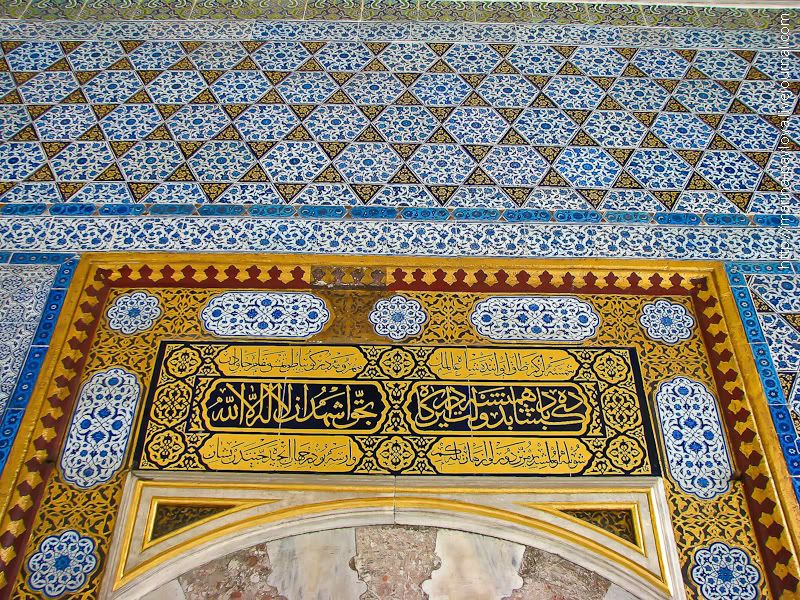
With the weather in the first and second day is clearly not out of luck. By the evening of the first day it became clear that getting lost in the depths of my suitcase hair dryer - is a vital thing for drying shoes. Fortunately, he needed exactly twice, and already on the second full day in town with might and main in the street the sun was shining. But the first evening the streets of Sultanahmet look something like this:

A ladder on our floor in the hotel - like this:

As rain poured down on the street, and the first day of the trip is still falling on Monday, when all museums are closed, it was decided to go to the Topkapi Palace. Topkapi in Istanbul for - it's like Versailles for Paris or London to Buckingham Palace: an essential landmark, a symbol of the centuries-old multi-million dollar investments. From 15 th to the 19th century Topkapi Palace was considered the main Ottoman Empire, its heart and pride: 700,000 square feet of wealth and splendor, miles of walls covered with tiles, a few hundred (if not thousands) of doors and windows, each of which is the product of art.
On inspection of the palace should be allocated somewhere half: it took us about 5 hours, including a visit to the harem, and museums. Since most of the key attractions of Istanbul are located in a pleasant walking distance from each other, then the remaining half can easily see something else.



Tickets to the palace are two: one - to visit the palace and museum, the second - to visit the harem. The latter have to buy an entirely different hand and the number of tickets sold per day is limited. Did not want to risk, so it was decided to first go to the harem, and only then to walk through endless yards, buildings, conversion, and museums of the palace.
Yard eunuchs in a harem:
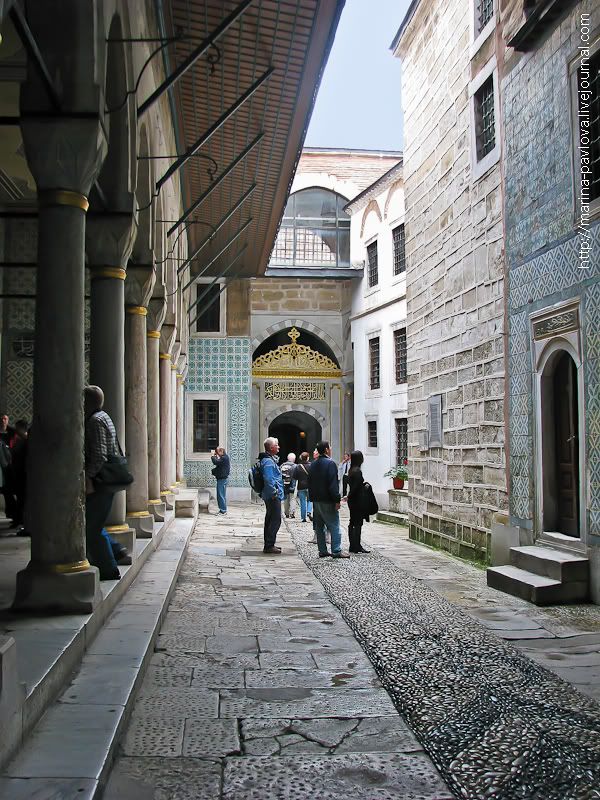
Dimensions harem forced to think about the sexual possibilities of the Sultan: 300 rooms, not including accommodation for the eunuchs, and common rooms. Moreover, if you think that every concubine had their own room, then it is not. A separate room in the harem were awarded a few: there had their own hierarchy, and "underclass" lived for a few people in the room, hoping (well, or not expecting) to be at least on the day of his beloved wife of the Sultan.
The highest hierarchy was, of course, the mother of the Sultan: She had her own apartment, and even your own garden for walks:

Those who managed to successfully have sex with the Sultan grew up in rank: they assumed their own room in a separate wing, and the birth of children - even greater honor and respect.
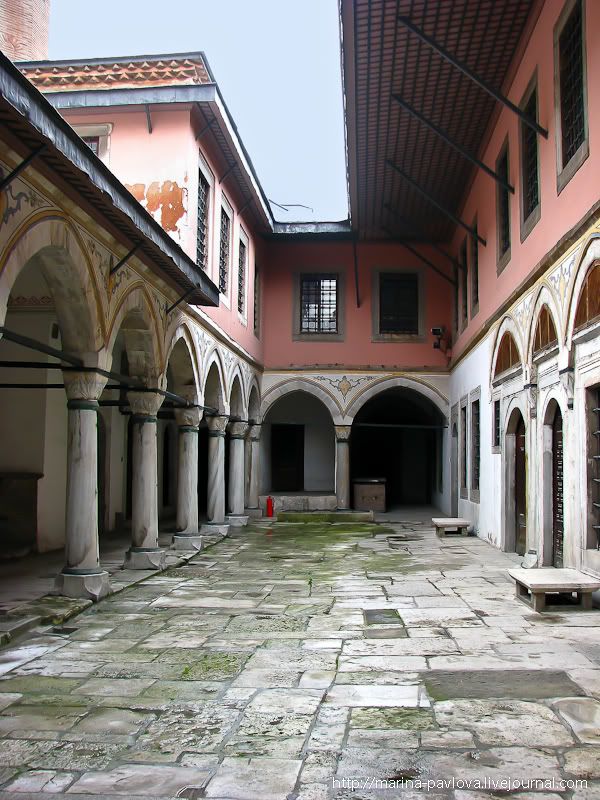


Inner courtyard Harem:
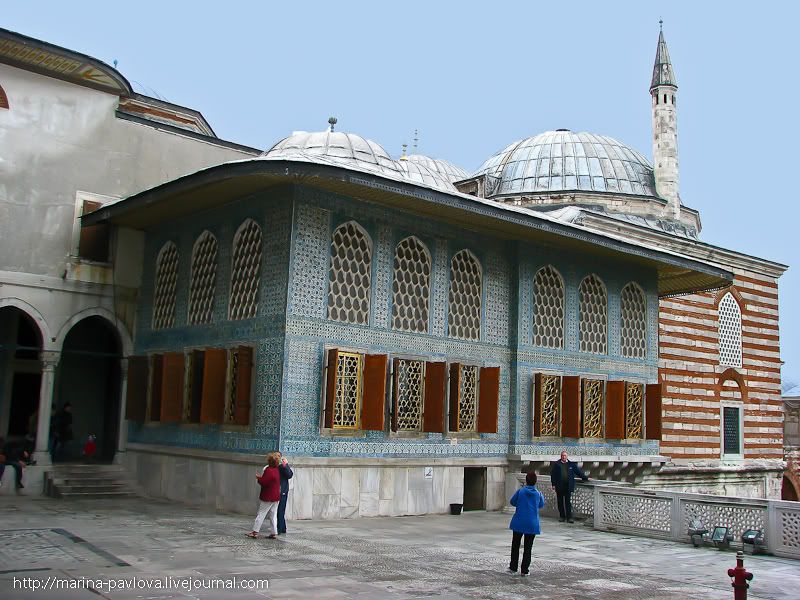

As in all the palace, the main decoration of walls - tiles:
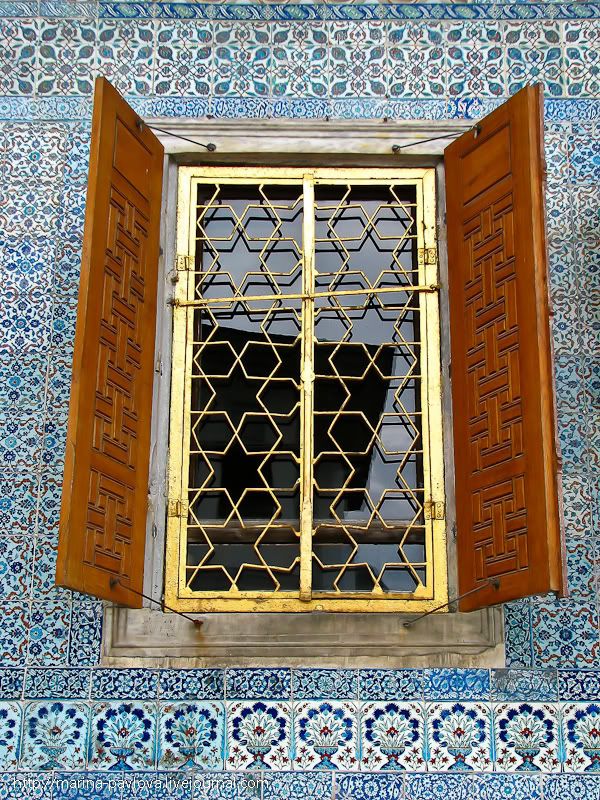

Something where you can see the so-called "Tugra" - a symbol of the sultan, his painting / printing performed in Arabic script. Each sultan had his own Tugra, but only managed to Topkapi become home for 25 of the sultans.

And this is a wall decoration sofa - the local parliament, where the Sultan had discussed important political matters with their approximate:

Generally, all the most expensive and most impressive thing is the palace, of course, associated with rest-rooms-apartments of the sultan. For a description of its facilities will often use the pronoun "most": the biggest rooms, most with high ceilings, the most beautiful tiles on the walls, the most chic furniture, the most beautiful doors and windows, etc. In general, everything that a Russian man causes an involuntary desire to say: "Hmm, nice to live not forbid."






Door options:


Some shelves:


One of the reception rooms of the Sultan:


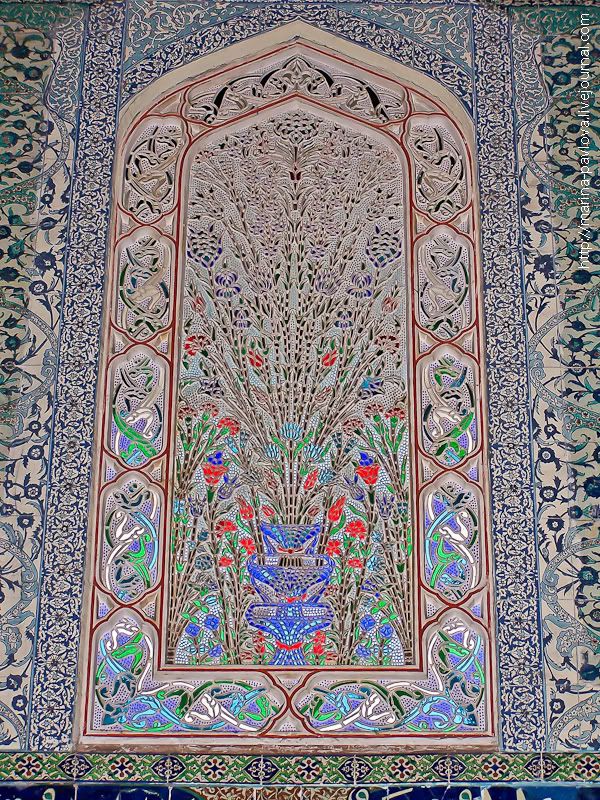


Generally, buildings in the territory Topkan very much, and they each had their own designation: the pavilion for negotiations, a room for receiving guests, a library, a building doctor, just gazebos, etc.
One of the many pavilions on the palace grounds:
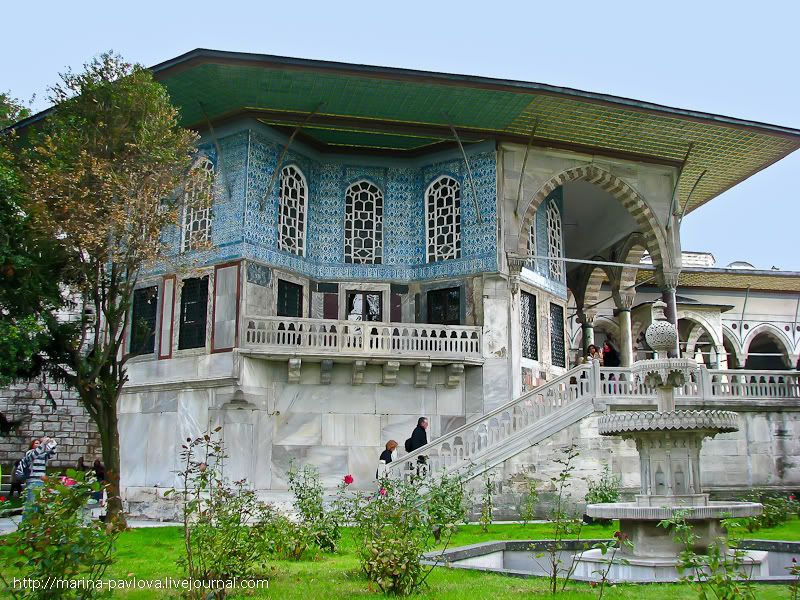



Most of the tiles - it Iznik ceramics (also known as: Nike, known for being the First Ecumenical Council was held). Ceramics of Iznik, which has a characteristic blue tinge, covered the walls of not only the sultan's palace, but also many other buildings in Istanbul: for example, the famous Blue Mosque, got its name just because of the large number of blue tiles on its walls.


At the palace is now a couple of interesting museums. The most memorable of them - of course, a treasure of the Sultan, where among other things, is known Kashykchi diamond (86 carats), as well as chic gifts to the Sultan of other top of the world. Photograph inside the treasury is prohibited, so here's picture from the outside:

Still a pavilion:
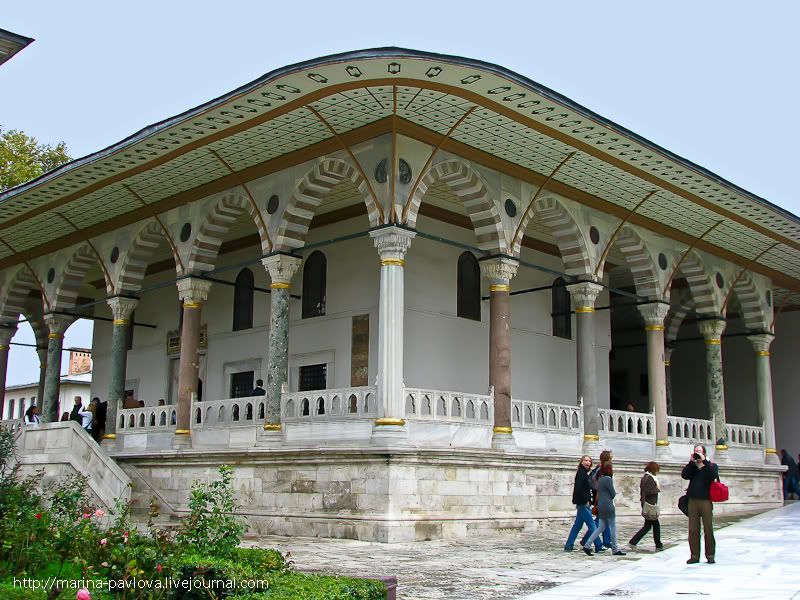
In one of the courtyards in the Topkapi is a garden with gazebo, which offers life-affirming view of the Bosphorus:
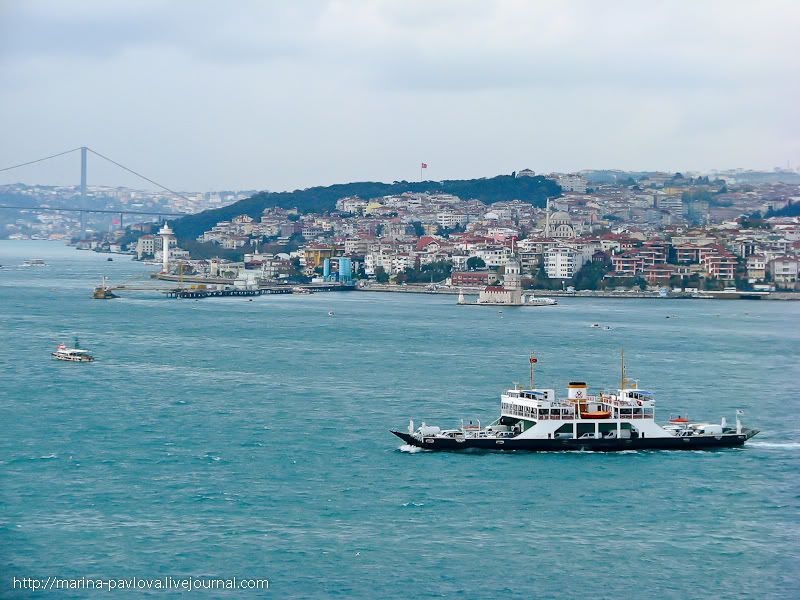
In the kitchen of the palace were about a thousand people chefs waiters serving court of the Sultan:


Plates:


Another museum in the palace:

In one of the courtyards Topkapi stands the church of St. Irene. This is one of the oldest churches in Istanbul, known for the fact that here at one time held the Second Ecumenical Council.

Church is on the restoration of chronic and can only see a small corridor outside:

And finally, just a rainy street in the outer part of the palace:





